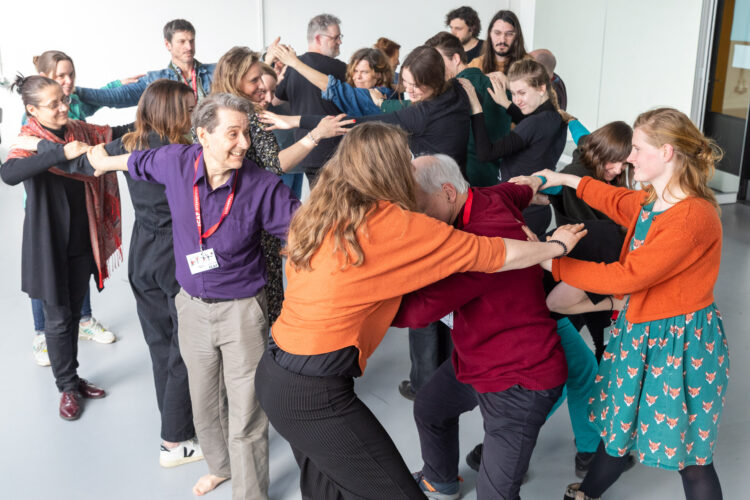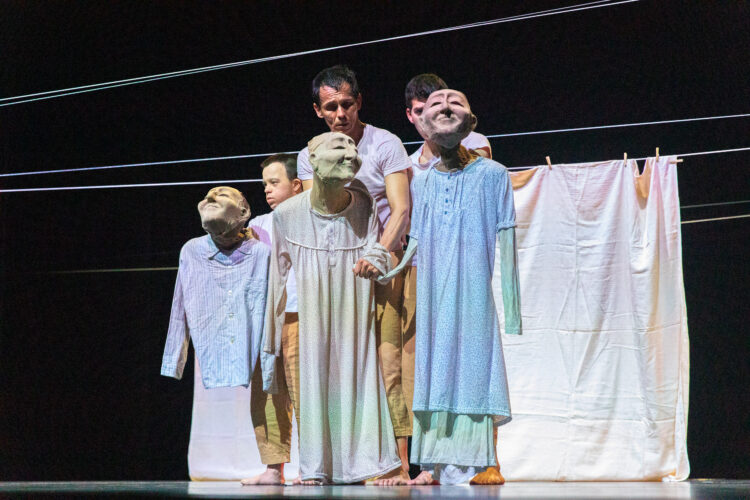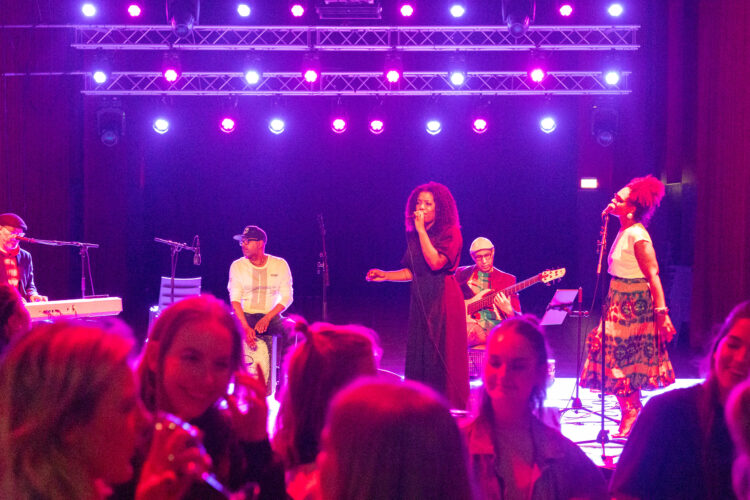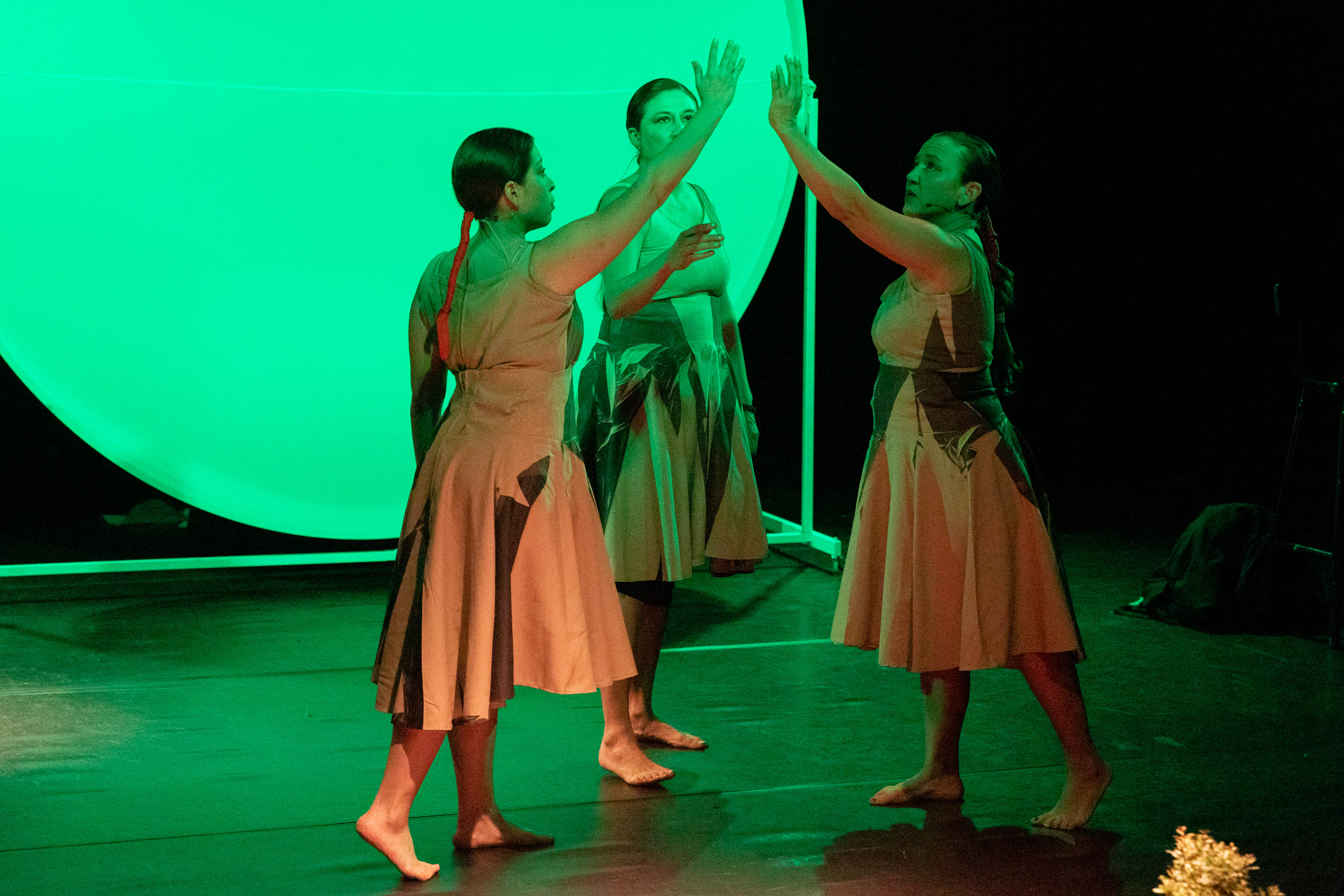ICAF Blog 3, Thursday 31 March, 2023
The stories we tell
In one of the afternoon workshop sessions, Catherine Koekoek of Rotterdam Wijktheater read aloud a short passage from Adriana Cavarero’s book, Relating Narratives: Storytelling and Selfhood. Caverero is writing about what she considers to be one of the most beautiful scenes in The Odyssey. Well into his ten-year journey, Odysseus has survived yet another a shipwreck and has been washed ashore on the land of the Phaecians. He does not reveal his identity to them, and is welcomed to their court as a courtesy given to a visiting guest. During the entertainment at the banquet that night, a blind storyteller sings the story of the legendary Odysseus and of his heroic deeds during the Trojan War. Odysseus has lived from moment to moment, year after year, and it has always simply been his life. But now, for the very first time, he hears his life being told as a story and it moves him to tears to acknowledge and affirm all that he has been through.
Catherine related this to the core work of community arts—the extraordinary significance and importance of having one’s story told. In the sessions that I attended today, many complex dimensions of this aspiration bubbled to the surface. Here is a flavour of some unifying themes, serious challenges, and contradictions that I witnessed.
In Kerrie Schaefer’s morning session, “Documenting Community Performance Processes,” she began with a practice that inevitably takes up valuable time when the clock is ticking, but is a fundamental part of any community arts work. She opened the floor to ask who is in the room? Through this invitation to hear each person share a glimpse into their story, it became clear that there was a wealth of knowledge and expertise here. Even in this lecture session, there would be co-learning. She asked us to speak to the question of whether and why we document our work or, more broadly, why this work should be documented. There were many answers. Documentation extends the impact of the work beyond the scope of those who were there in person. Documentation can be used to get further funding and potentially be seen by those who can influence policy making. Documentation becomes the archive of what has been achieved, and documentation enables those of us in the field to learn about each other’s work. It did not escape notice that over twenty years ago,Eugene Van Erven’s book, Community Theatre: Global Perspectives, which documented the work of community artists in six countries, was the prelude that led to ICAF.
Kerrie reminded us of Trash Dance, Andrew Garrison’s documentary film of Allison Orr’s project in Austin Texas, that was screened at the 2017 ICAF. I was lucky enough to be at that screening and I vividly remember seeing all the teary eyes in the lobby after the show as this throng of community artists saw the essence of the work we do celebrated and affirmed in the film. That night we were all Odysseus at the court of the Phaecians.
The thing about Andrew’s film is that Allison’s work was curated for us. Her story, the story of her company, Forklift Danceworks, the stories of the people in the community with whom she worked, and the Austin audience that attended, were artfully crafted by a storyteller. Dramatic tension was evident in the myriad negotiations she had to navigate to get the project to happen. Ultimately there was dramatic tension from Mama Nature as well, when a downpour of rain threatened to make them have to cancel the performance. Perhaps most artful, though, was Andrew’s brilliantly edited “Scheherazade moment” toward the beginning of the film. In a casual interview with Allison that took place just 48 hours before the performance, Allison is reflecting on what she’s feeling and what she’s been able to achieve. She admits that with only two days to go, the show is not yet ready. But, she says “That’s not what it’s about.” From off camera, the interviewer’s voice asks: “What is it about?” And as Allison laughs a nervous laugh, there is a look in her eyes that seems to say she has no idea. The frame freezes and then the story continues. At the very end of the film, Garrison returns to that moment. The off-camera voice asks, “What is it about?” Allison laughs, and we see that the look on her face was not bewilderment at all—she was pausing for just a few seconds before she articulately explains exactly what the project is about. It is a cinematic moment of triumph to witness her so full of grace and confidence in the work she does.
The point of this is to emphasise that documentation is not some neutral recording of events. The art of documentation is far more than reporting; it is an inherently creative practice and the filmmaker takes a stance in relation to the subjects. In the skilled hands of a sympathetic filmmaker like Andrew Garrison, the story of Forklift Danceworks is told the way Allision and her team (and presumably the sanitation workers they collaborated with) want it to be told. This is how they wish to be seen and understood. But what happens when, despite all best intentions, the documentarians feel compelled to use their medium of film tell a gripping yarn that emphasises what they see as juicy or significant even if it may not be the point of the story that the subjects would tell about themselves? This question about the nature of documenting community arts projects runs parallel to fundamental concerns about the creation of the arts projects themselves. Who gets to tell these stories, and on whose terms are they told?
In clips from another documentary Kerrie presented, 900 Neighbours, part of Big hART’s Northcott Narratives project, we saw some elegant storytelling. In the film, actions and voices of certain individuals embody the injustice of socially embedded racism from outsiders, and enforced marginalization of the Northcott community that convey profound insights without any narrative commentary at all.
Similar concerns were woven into the session I attended in the afternoon, “Behind the Scenes of the Rotterdam Community Theater (Rotterdams Wijktheater).” Liselot van der Geer and Catherine Koekoek walked us through their company’s three stage process:
1) become a group,
2) carry a story forward while acknowledging the pluralism evident in all the stories we tell,
3) shift the weight toward presenting the stories to an audience.
They guided us through some delightful participatory activities and some visually and aurally beautiful work emerged from it. Through it all, these same questions about curation continued to bubble up to the surface. Who gets to frame the stories being told? Whose stories among the group members are privileged? How does authentic collective authorship work? Can it work?
Since I am telling this story, I will venture to offer my take on the conundrum we’re wrestling with. I take inspiration from some wisdom about plot and story by the English novelist and essayist E.M. Forster. Forster explains that, “The Queen died and then the King died” is plot. “The Queen died and then the King died of grief” is story. This is the difference between a performance about a progression of events in the storytellers’ lives and their presentation of insights about the relationships in their lives. All through the sessions today, and in yesterday’s performances as well, it wasn’t the plot lines that grabbed me. What I personally found so compelling was being witness to nuanced expressions of the range of relationships among the people in the stories. I wonder whether those who practice community arts as a medium for people to collectively explore and then theatrically express their insights on the ways in which people engage with each other have found a means to resolve this tangle of achieving collective authorship?
In the screening of the short film Fall, created by MEXE Associação Cultural from Portugal, the audience was treated to a luminous evocation of relationships on themes of solitude, sadness, distance, scarcity, and poverty during the pandemic. With a minimal use of words, this community-based theatre company (and now also film producers) sought to translate the experiences of their neighbours into performance. The film was filled with silences—many different kinds of silences—and each kind spoke volumes about the residents’ life situations and hopes and fears.
A unifying element of so much of this work at the festival is beauty. What I am finding so beautiful are all the times that these artists have partnered with their communities to craft a quintessential evocation of their collective understanding of how their relationships with the people and situations intersect with and impact their lives in any number of ways. Could this be the key to finding collective authorship in the complex medley of stories that must be told and sung and shown and acknowledged?
More adventures to come tomorrow,
Will




